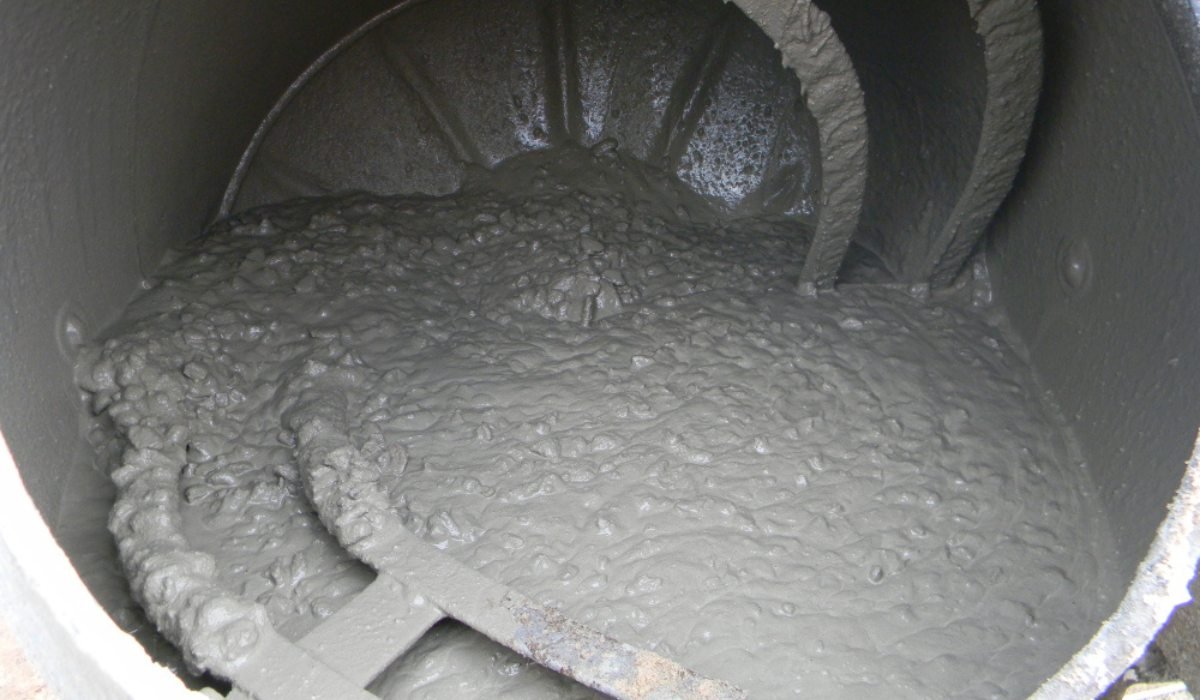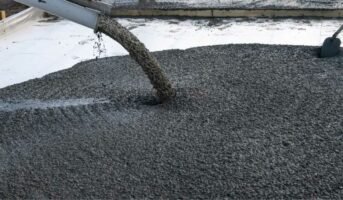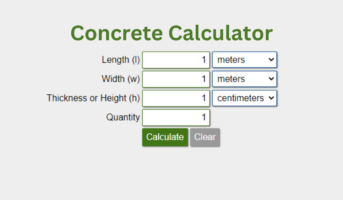If one uses premium quality raw materials, it’s possible to produce concrete with a strength that surpasses the bare minimum needed for the job. That could be acceptable from the standpoint of the mechanical features, but the project’s total cost might skyrocket to an unacceptable level, making it impossible to go with that option. To avoid this, mix design of concrete provides the requisite structural durability and toughness without exceeding the project’s financial limits.
In this article, we will explore the significance of the mix design of concrete, as well as the elements that influence it, and the steps to take when selecting the suitable mix.
Read about:What is slump test?
Mix design of concrete: What is concrete mix design?
Concrete mix design is a comprehensive decision-making process which requires knowledge of raw ingredients and their proper proportions to achieve the required durability and strength for a construction project. Water, aggregate, cement, and a few admixtures (where required) make up the bulk of concrete, and each of these components has its own unique features that must be taken into account in order to create a well-balanced and effective mix design.
see also about rmc concrete
Mix design of concrete: Objective
Determining what percentages of each constituent will provide concrete with the desired characteristics is the objective of mix design. The mix proportions must be chosen such that the fresh concrete has the appropriate workability and can be conveniently poured and compressed for the specified application. The concrete, while still wet, must be pliable enough to completely fill the mould and encase the reinforcement, and, after it sets, it must be strong and long-lasting enough to meet design specifications.
known about flexural strength of concrete
Mix design of concrete: Types
Depending on the desired level of durability, several concrete mixtures may be used. Typically, the presence or absence of an admixture and the quantity of cement are used to distinguish one kind from another.
Normal Concrete

Source: Pinterest
see also about Grades of concrete
Because of its standardised, mass-production-friendly design, “normal” or “regular” concrete is by far the most common mix design of concrete used in construction. To create this concrete mixture, meticulous adherence to the manufacturer’s preset mixing design specifications is required throughout the process.
Normal concrete has remarkable resistance to compressive strain but is completely susceptible to tensile assault in terms of mechanical characteristics. It has a strength of up to 40 MPa. However, it usually fails under extreme circumstances like subfreezing temperatures.
High-Strength Concrete

Source: Pinterest
known about curing of concrete
The use of high-strength concrete in structures like buildings and sidewalks is recommended due to the material’s superior resistance to stress. Because of its low water-to-cement ratio, this form of concrete is often capable of withstanding compressive stresses greater than 40 MPa. In most cases, the w/c ratio for this type of mix design is under 0.35, which is a huge drawback due to the brittleness that may be achieved.
Air-Entrained Concrete

Source: Pinterest
Air-entrained concrete is best used in cold climates. Given that water is a fundamental component of concrete, its expansion at extremely low temperatures may cause stress that might eventually lead to fractures if there are no spaces within the concrete matrix. Adding air-entraining agents or additives allows for the anticipated internal expansion, preventing any potential harm. However, the density and durability of air-entrained concrete are rather poor. As a result, this kind of concrete mix should only be used in constructions that are not subjected to heavy loads.
Mix design of concrete: Factors affecting the mix design of concrete
The choice of mixture proportions for concrete mixed designs is impacted by a number of factors, including the following:
Compressive strength
It’s a major factor in shaping the rest of the concrete’s measurable characteristics once it’s been set. The conventional water-cement proportion of the mix is decided upon based on the average compressive strength that is needed at a certain stage, which is typically 28 days. The degree to which concrete has been compacted is the other component that, in addition to its age and the temperature at which it was allowed to cure, influences the strength of concrete.
Workability
There are three variables that influence how much workability is needed. These include the length of the exposed concrete section, the weight of the reinforcements, and the kind of compression that will be employed. Full compression in the small, difficult section with multiple corners or inaccessible portions requires concrete with great workability. The same is true of the implanted steel bars.
Durability
Concrete’s durability lies in its capacity to withstand harsh circumstances. Superior durability may be expected from concrete with higher strength. When great strength isn’t required, but extreme exposure means the concrete must last a long time, the water-to-cement ratio will be based on this durability need.
Maximum nominal aggregate size
Since concrete workability rises with aggregate size, the cement demand for a given water-cement ratio decreases with aggregate size. Compressive strength increases as aggregate size decreases. The nominal aggregate size should be as large as practicable, according to IS 1343:1980 and IS 456:2000.
Aggregate type
The aggregate-cement ratio, which must be met in order to achieve the sought-after workability and mandatory water-cement ratio, is profoundly affected by the aggregate type. Grading homogeneity, which may be obtained by blending aggregates of varying sizes, is an essential quality in a high-quality aggregate.
How to select the mix design of concrete
The formulation of a modern concrete mix may be intricate. The strength and aesthetic requirements of the project, as well as the requirements of any applicable laws or building rules, will determine the concrete mixture that will be used. The design process starts with establishing concrete specifications. The expected design strength and the predicted weather conditions during operation are also included in these specifications. In order to measure the concrete’s compressive strength, cylindrical samples that have been subjected to the same curing conditions are taken.
From the price of the different additives and aggregates to the compromises that must be made between “slump” (easiness of mixing and placing) and performance, many things need to be considered. Cement (Portland or other cementitious material), fine and coarse aggregates, water, and filler content are then used to formulate the mix.
See also: 23 types of concrete you need to know
Considerations for mix design of concrete
Some of the things that need to be taken into account while designing concrete mixes include the following:
Grade designation
When concrete is tested in any curing media after it has been cured, the strength of the concrete is measured in N/mm2. The application determines which grade of concrete should be used.
Choice of cement
Cement choice varies based on use. Before being evaluated in the design mix, the cement needs to have its performance assessed to see whether or not it meets the requirements imposed by its use.
Selecting aggregate size
The quantity of aggregates required for each mix is determined by the required physical qualities for the design. Before usage, each kind of aggregate must first undergo quality sizing.
Type of water
Before being used, any water that will be employed in the formulation of a concrete mix should be put through a series of tests to determine whether or not it falls within the acceptable range of water content for concrete. Although the vast majority of potable water may be used for making concrete, testing is nevertheless strongly recommended.
Water-to-cement ratio
Coherence, preliminary and final set, cement solidity, workability, concrete slump, and compressive factor are only a few of the characteristics that may be determined by testing the water-to-cement ratio.
Durability
After curing for 28 days, this is the measurement used to determine the requisite toughness of any given concrete grade. On-site control testing should be done for durability.
Mix design of concrete for different concrete grades
| Types of Concrete | Concrete Grade | Mix Ratio
(Cement: Sand: Aggregates) |
Compressive Strength |
| Ordinary Concrete | M5 | 01:05:10 | 5 N/mm2 |
| M7.5 | 01:04:08 | 7.5 N/mm2 | |
| M10 | 01:03:06 | 10 N/mm2 | |
| M15 | 01:02:04 | 15 N/mm2 | |
| M20 | 1:1.5:3 | 20 N/mm2 | |
| Standard Concrete | M25 | 01:01:02 | 25 N/mm2 |
| M30 | Design Mix | 30 N/mm2 | |
| M35 | Design Mix | 35 N/mm2 | |
| M40 | Design Mix | 40 N/mm2 | |
| M45 | Design Mix | 45 N/mm2 | |
| M50 | Design Mix | 50 N/mm2 | |
| High Strength Concrete | M55 | Design Mix | 55 N/mm2 |
| M60 | Design Mix | 60 N/mm2 | |
| M65 | Design Mix | 65 N/mm2 | |
| M70 | Design Mix | 70 N/mm2 |
FAQs:
Why do we need a concrete mix design?
Mix design of concrete is the process of calculating the ideal proportions of individual concrete ingredients in order to produce a concrete blend with the required characteristics.
What is the difference between the nominal mix and the design mix?
Typically, a small concrete mixer operated on-site is all that's needed to get the nominal mix. While RMC plants (ready-mix concrete plants) are responsible for creating the design mix.
What is the strongest mix ratio for concrete?
According to common practice, the quantity of aggregate utilised in a concrete mixture accounts for the vast majority of the mixture's overall weight. In other words, aggregates make up the bulk of concrete's basic components. A typical mix of raw ingredients has a 1:3:5 (Cement: Sand: Gravel) mix design ratio.
What benefits does concrete mix design offer?
Concrete of the desired strength may be prepared with the proper amount of cement by using a concrete mix design. By reducing the heat of hydration, project costs may be reduced, an inexpensive concrete mix can be produced, as well as the production of shrinkage cracks is avoided.
Housing News Desk is the news desk of leading online real estate portal, Housing.com. Housing News Desk focuses on a variety of topics such as real estate laws, taxes, current news, property trends, home loans, rentals, décor, green homes, home improvement, etc. The main objective of the news desk, is to cover the real estate sector from the perspective of providing information that is useful to the end-user.
Facebook: https://www.facebook.com/housing.com/
Twitter: https://twitter.com/Housing
Email: [email protected]











